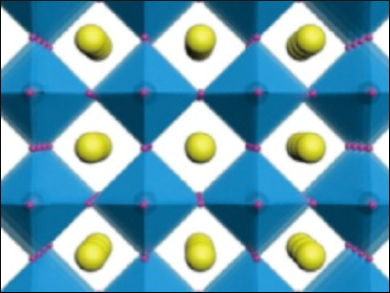All-inorganic cesium lead halide perovskite (CsPbBr3) nanocrystals are useful for light-emitting diodes (LEDs) due to their optical properties. Unfortunately, the insulating nature of long alkyl-chain surface ligands in the CsPbBr3 nanocrystals (NCs) hinders carrier transport, which can lessen the LEDs’ performance.
Jien Yang, Henan Normal University, Xinxiang, China, Mingjian Yuan, Nankai University and Collaborative Innovation Center of Chemical Science and Engineering, Tianjin, China, and colleagues have developed a strategy to improve the quality of CsPbBr3 NCs and LEDs by introducing conjugating molecular ligands into the nanocrystals. The team introduced the conjugated molecule 3-phenyl-2-propen-1-amine (PPA) into CsPbBr3 NCs through a two-step surface-ligand-engineering process.
LEDs based on the PPA-capped CsPbBr3 NCs show a maximum luminance of 26,475 cd m–2 for emissions at 517 nm, and a maximum external quantum efficiency (EQE) of 7.13 %. The developed approach addresses the trade-off between stability and carrier transport in NCs.
- Conjugated Alkyl-amine by Two-step Surface Ligand Engineering in CsPbBr3 Nanocrystals for Efficient Light-emitting Diodes,
Li Zhang, Qiong Zhang, Xiangyu Xing, Yuanzhi Jiang, Tingwei He, Yanmin Huang, Zhiwei Ma, Jien Yang, Mingjian Yuan,
ChemNanoMat 2018.
https://doi.org/10.1002/cnma.201800498



